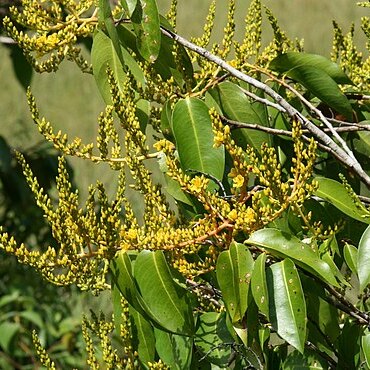Inflorescence paniculate to racemose or umbellate or rarely reduced to 1–2 flowers, terminal or axillary, sometimes at the base of the current year’s growth; bracts scale-like, caducous or ± persistent; pedicels articulated at or above the base.
Stamens 10, diplostemonous, free; anthers yellow or orange, elongate and frequently narrowed upwards, often rugose, dehiscing by terminal pores, deciduous; filaments stout, much shorter than the anthers, persistent, or absent.
Leaves petiolate to sessile and amplexicaul; lamina with margin serrate to ciliate or entire; stipules entire, not striate, coriaceous, free or ± united intrapetiolarly, caducous or ± persistent.
Sepals 5, quincuncial in bud, green or yellow in flower, persistent and usually enlarging and becoming varying shades of red and coriaceous in fruit (in Old World species).
Seeds straight or curved, without endosperm or an internal projection of the endocarp; embryo straight or ± curved, incumbent or accumbent, isocotylous or heterocotylous.
Fruit of 1 to several free black or brown 1-seeded drupelets with fleshy or coriaceous mesocarp, inserted on the enlarged red or purplish receptacle.
Carpels 5–10, apparently free at the base, 1-ovulate; styles slender, gynobasic, completely united; stigma terminal, not enlarged.
Petals 5, yellow or rarely white, not or scarcely unguiculate, deciduous.
Trees or shrubs, usually completely glabrous.

